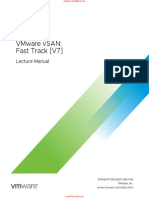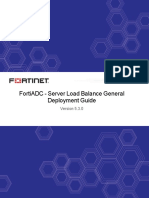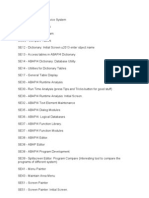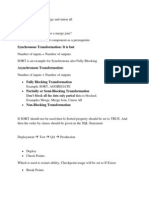0% found this document useful (0 votes)
225 views106 pages1.elasticsearch Introduction Slides
Built-in analytics and
aggregation capabilities
Elasticsearch is the most popular
enterprise search engine
Elasticsearch Architecture
- Cluster: A group of nodes that work together
- Node: A single server that is part of the cluster
- Index: A collection of documents
- Type: Logical grouping of documents (deprecated)
- Shard: Horizontal partition of an index
- Replica: Additional copies of shards for high availability
- Master node: Manages cluster state and operations
- Data node: Stores and retrieves documents
- Client node: Interacts with the cluster via REST API
Elasticsearch is distributed, fault tolerant and scalable by
design. Data is partition
Uploaded by
venunainiCopyright
© © All Rights Reserved
We take content rights seriously. If you suspect this is your content, claim it here.
Available Formats
Download as PDF, TXT or read online on Scribd
0% found this document useful (0 votes)
225 views106 pages1.elasticsearch Introduction Slides
Built-in analytics and
aggregation capabilities
Elasticsearch is the most popular
enterprise search engine
Elasticsearch Architecture
- Cluster: A group of nodes that work together
- Node: A single server that is part of the cluster
- Index: A collection of documents
- Type: Logical grouping of documents (deprecated)
- Shard: Horizontal partition of an index
- Replica: Additional copies of shards for high availability
- Master node: Manages cluster state and operations
- Data node: Stores and retrieves documents
- Client node: Interacts with the cluster via REST API
Elasticsearch is distributed, fault tolerant and scalable by
design. Data is partition
Uploaded by
venunainiCopyright
© © All Rights Reserved
We take content rights seriously. If you suspect this is your content, claim it here.
Available Formats
Download as PDF, TXT or read online on Scribd
/ 106











































































































